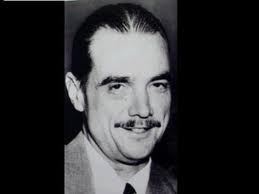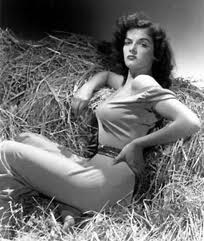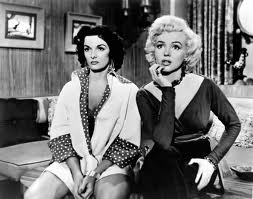AARP Hearing Center
Jane Russell - Beyond the Pinup
By Bill Newcott, March 1, 2011 04:58 PM
I'm not sure it's possible to explain Jane Russell, who died on Monday at age 89, to kids today. I was born right at the time she was at her Hollywood height, and growing up I barely understood what all the fuss was about. Like most late Boomers, I first became aware of Jane through her now-famous Playtex TV commercials, pitching a bra specially made for "us full-figured girls." I recall turning to my mother and saying, "Well, she doesn't look fat to me." My mom, who apparently did not want to have that particular discussion right then, never looked up from her Agatha Christie novel.
Still, it seems impossible to overstate the cultural impact Russell had during the decade following the mid-1940s. A trained actress and singer, she nevertheless became famous for not being on screen. That's because her first film was director/aviator Howard Hughes' western The Outlaw-a movie that sat in the can for more than two years, Hollywood legend has it, because the censors were worried about Hughes' leering focus on his star's ample bosom.

The director, it seems, had summoned all his engineering talents to fashion a special bra that would make the most of Russell's figure (in later years, Russell insisted that she tried on Howard's bra, didn't like it, and made the picture wearing underwear she brought from home). Until The Outlaw was finally released in 1943, Russell carried the cachet of mysterious sultriness-that famous pinup of her in The Outlaw, fairly bursting from a blouse that threatened (promised?) to slip from her shoulders at any moment, was a favorite of GIs in World War II, a symbol of the girl back home for whom they were spilling their blood.

Always a good actress, Russell didn't seem to aspire to great art. She appeared most at home playing comic roles opposite Bob Hope (who famously explained the word culture as "The ability to describe Jane Russell without moving your hands"), or in musicals, most notably alongside Marilyn Monroe in Gentlemen Prefer Blondes.

It's tempting to compare Russell to the tragic sex bombs of the '50s, particularly Monroe and Jayne Mansfield. Her survival may have had something to do with the company she kept. From the start, Russell nurtured a spiritual side: at the height of her sex symbol fame, she held weekly Bible studies at her home. Once she even convinced Monroe to attend one.
"The next morning I said, what did you think?'" Russell recalled in the 2010 documentary, Hollywood on Fire. "And she said 'Well, it was nice, but it's not for me.' And I thought later, 'If only it had been for her, her life would have been so different.'"































































